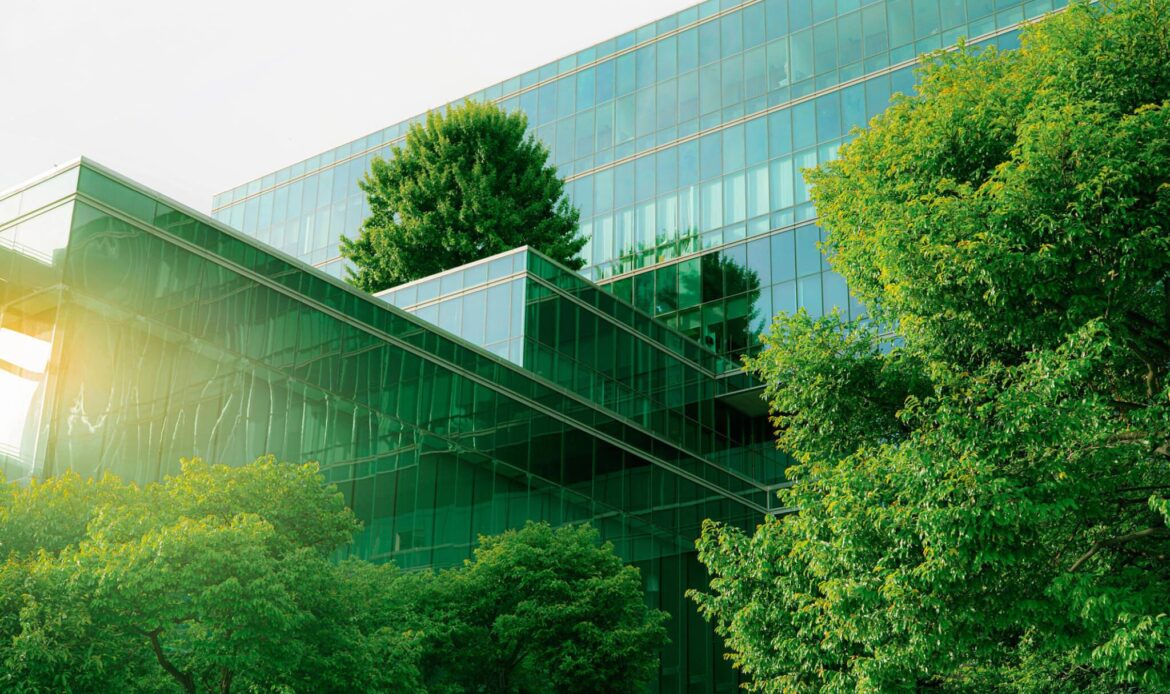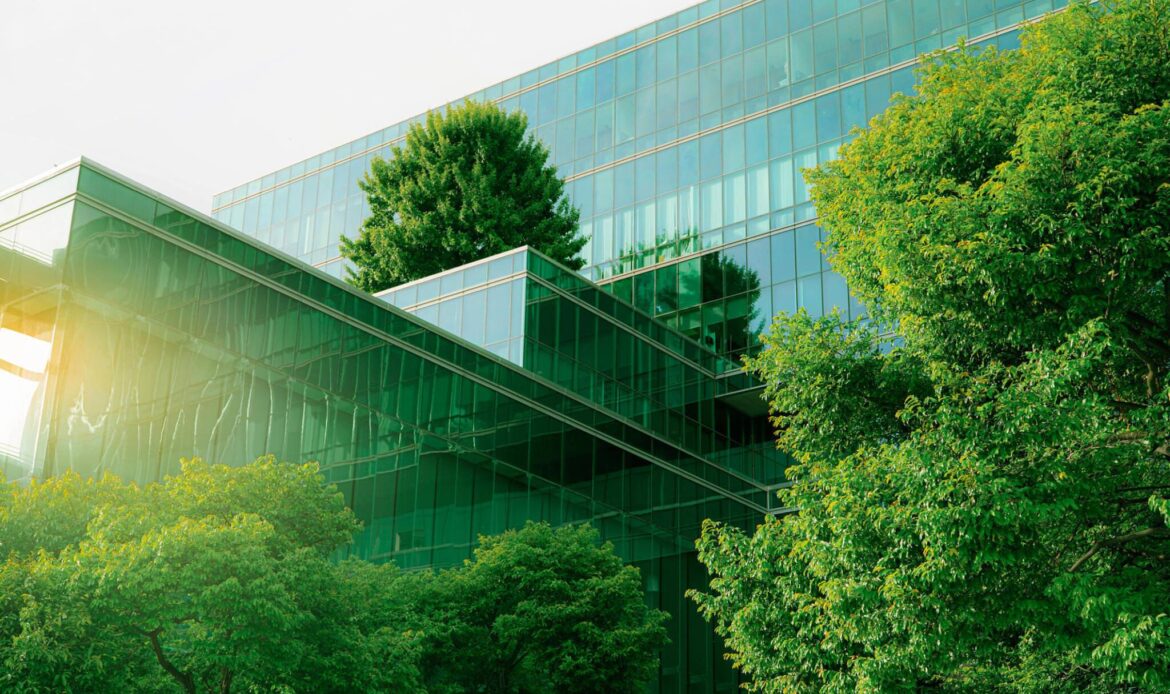

Pioneering Success: How Nigeria is Transforming Government Buildings for a Sustainable Future
Introduction
As Nigeria navigates rapid urbanization and economic development, the importance of sustainability in government buildings has never been more critical. Government buildings, as symbols of public service and administrative efficiency, must embody sustainable practices to lead by example and foster a culture of environmental stewardship. This article delves into the essential aspects of addressing sustainability in Nigerian government buildings, highlighting key challenges, innovative solutions, and best practices for promoting eco-friendly development.
The call for environmental stewardship has never been louder than it is today. Around the world, governments, businesses, and individuals are waking up to the dire consequences of unsustainable development—climate change, resource depletion, environmental degradation, and growing public health concerns. Nigeria, Africa’s most populous nation and an emerging economic giant, is at a crucial juncture in redefining how it addresses these pressing environmental issues, particularly through its public infrastructure. One of the most powerful ways the government can lead by example is through sustainability in Nigerian government buildings, creating a ripple effect that extends into the private sector and civil society.
Historically, public buildings in Nigeria were not constructed with environmental sustainability in mind. The focus was more on cost-effectiveness, immediate functionality, and bureaucratic completion, rather than the long-term consequences of energy consumption, carbon footprints, water usage, or waste generation. This outdated model is no longer tenable. The global push towards climate responsibility, coupled with Nigeria’s ratification of various international environmental treaties such as the Paris Agreement, makes it imperative that public buildings be reimagined as green infrastructure assets—beacons of environmental consciousness.
The Nigerian government has begun to acknowledge its pivotal role in setting standards for sustainable development. From ministries and agencies to state governments, efforts are increasingly being directed at reducing the environmental impact of government-owned buildings. This involves the integration of green architectural designs, sustainable building materials, energy-efficient systems, renewable energy sources like solar panels, and water conservation measures. Pioneering a greener future through government buildings is not just about environmental conservation; it’s also about economic prudence, public health improvement, and long-term resilience against climate-related risks.
Sustainability in Nigerian government buildings must be addressed on multiple fronts—legislation, implementation, education, and innovation. First, there is a need for clear, enforceable green building standards embedded within the nation’s laws and building codes. While the National Building Code of Nigeria was revised to incorporate certain environmental considerations, enforcement remains a challenge. There is still a large gap between policy formulation and real-world application, especially at state and local government levels where capacity, resources, and political will are often limited.
Additionally, public procurement and construction contracts must begin to mandate sustainability criteria. This means rewarding contractors who use eco-friendly materials, apply energy-saving construction techniques, and integrate renewable energy solutions. It also involves training architects, engineers, and builders on the latest in green building innovations and certifying them accordingly. Organizations such as the Green Building Council of Nigeria (GBCN) have taken commendable steps toward creating awareness and capacity in this field, but greater collaboration with government agencies is essential to mainstream these efforts.
Financial constraints remain a critical barrier to adopting sustainable practices, especially when juxtaposed against the pressing need for infrastructure expansion. Yet, this obstacle can be overcome through strategic investment and partnerships. Public-Private Partnerships (PPPs), climate financing, and green bonds offer promising avenues for securing funds to build or retrofit government buildings sustainably. International organizations such as the United Nations Development Programme (UNDP), the World Bank, and the African Development Bank (AfDB) have expressed continued interest in supporting sustainable infrastructure in Nigeria, provided there is a clear framework and accountability.
Moreover, the transition toward sustainable government buildings offers economic benefits beyond environmental gains. Reduced utility bills, lower maintenance costs, job creation in the green construction sector, and improved workplace conditions for public servants all contribute to national productivity. Citizens also benefit from reduced pollution, better access to natural light, and improved indoor air quality in public spaces such as hospitals, schools, and administrative centers.
Civic engagement and public education must also play a role. As Nigerians begin to witness the tangible benefits of green government buildings—solar-powered clinics, energy-efficient schools, ventilated courtrooms, and eco-conscious administrative offices—they are more likely to demand similar standards in their homes, workplaces, and communities. This creates a feedback loop that reinforces sustainability as a national value and not just a governmental policy.
In a nation where climate change is increasingly affecting everything from agriculture to urban development, pioneering sustainable practices in government buildings sends a strong signal about the country’s commitment to environmental responsibility. Nigeria has the opportunity to set the pace for West Africa in this regard. By boldly transforming the public sector’s built environment, the government can demonstrate that economic growth and environmental responsibility are not mutually exclusive but are in fact two sides of the same coin.
As we delve deeper into the legislative landscape, technical innovations, case studies, and future strategies that define this transition, this article will explore the holistic approach Nigeria must take to achieve true sustainability in government buildings. The time to act is now, and the public sector must be the vanguard of this transformation.
The Imperative for Sustainability in Government Buildings
Sustainability in government buildings is vital for several reasons:
- Leadership by Example: Government buildings serve as models for private sector projects. Demonstrating commitment to sustainability sets a precedent and encourages other sectors to adopt similar practices.
- Resource Efficiency: Sustainable buildings reduce energy and water consumption, lower operational costs, and minimize environmental impact.
- Public Health and Well-being: Green buildings enhance indoor air quality and provide healthier environments for occupants, contributing to the well-being of public servants and visitors.
Key Sustainability Challenges in Nigerian Government Buildings
1. Energy Efficiency
- Challenge: Energy consumption in government buildings is often high due to outdated infrastructure, inefficient systems, and inadequate energy management practices.
- Strategy: Implement energy-efficient technologies such as LED lighting, high-performance HVAC systems, and smart thermostats. Incorporate renewable energy sources like solar panels to reduce dependency on non-renewable energy and lower energy costs.
2. Water Conservation
- Challenge: Water wastage is a significant issue in many government buildings, exacerbated by outdated plumbing fixtures and inefficient water management systems.
- Strategy: Install water-saving fixtures such as low-flow faucets, toilets, and urinals. Implement rainwater harvesting systems and greywater recycling to reduce potable water use and promote sustainable water management.
3. Sustainable Materials and Construction
- Challenge: The use of non-sustainable materials and construction practices can increase the environmental footprint of government buildings.
- Strategy: Choose sustainable building materials such as recycled content, locally sourced products, and low-impact materials. Utilize environmentally friendly construction methods to minimize waste and reduce the overall environmental impact.
4. Indoor Environmental Quality
- Challenge: Poor indoor air quality and inadequate ventilation can negatively affect the health and productivity of building occupants.
- Strategy: Ensure proper ventilation and air filtration systems to maintain high indoor air quality. Use low-VOC (volatile organic compound) paints and finishes to reduce indoor pollutants and create a healthier indoor environment.
5. Waste Management
- Challenge: Construction and renovation projects often generate significant amounts of waste, which can contribute to environmental degradation if not properly managed.
- Strategy: Implement waste reduction strategies by adopting recycling and composting programs. Develop a waste management plan to handle construction debris and minimize landfill contributions.
6. Climate Adaptability
- Challenge: Nigeria’s diverse climate zones present unique challenges for designing and maintaining sustainable government buildings.
- Strategy: Incorporate climate-responsive design elements such as passive cooling, natural shading, and appropriate insulation to enhance the building’s resilience to local climate conditions.
Best Practices for Promoting Sustainability in Government Buildings
1. Integrate Sustainable Design Principles
- Holistic Approach: Adopt a holistic approach to sustainability by integrating energy efficiency, water conservation, and sustainable materials into the design and construction phases. Collaborate with architects and engineers to create a design that maximizes resource efficiency and minimizes environmental impact.
- Green Certifications: Pursue green building certifications such as Leadership in Energy and Environmental Design (LEED) or the Nigerian Green Building Council’s (NGBC) Green Building Rating System. These certifications provide a framework for achieving and demonstrating sustainability goals.
2. Enhance Energy Management
- Energy Audits: Conduct regular energy audits to identify areas for improvement and optimize energy use. Implement energy management systems to monitor and control energy consumption effectively.
- Renewable Energy Integration: Invest in renewable energy technologies, such as solar photovoltaic panels and wind turbines, to reduce reliance on fossil fuels and lower greenhouse gas emissions.
3. Adopt Water Conservation Measures
- Efficient Fixtures: Upgrade to water-efficient fixtures and appliances to minimize water usage. Install rainwater harvesting systems and greywater recycling to supplement water supply and reduce demand on municipal sources.
- Smart Irrigation: Use smart irrigation systems and drought-resistant landscaping to conserve water in building grounds and landscaping.
4. Promote Sustainable Construction Practices
- Material Selection: Choose sustainable building materials with low environmental impact. Consider materials that are recycled, locally sourced, or have a lower carbon footprint.
- Waste Reduction: Implement waste reduction practices during construction and renovation. Develop a waste management plan that includes recycling and proper disposal of construction debris.
5. Improve Indoor Environmental Quality
- Ventilation and Air Quality: Ensure adequate ventilation and air filtration to maintain high indoor air quality. Use low-VOC paints, finishes, and adhesives to minimize indoor pollutants.
- Natural Lighting: Incorporate natural lighting into building design to enhance occupant comfort and reduce the need for artificial lighting.
6. Engage Stakeholders and Foster Collaboration
- Stakeholder Involvement: Involve stakeholders, including government officials, architects, engineers, and the public, in sustainability planning and decision-making. Foster collaboration to ensure that sustainability goals align with the needs and expectations of all parties.
- Training and Education: Provide training and education for facility managers and building occupants on sustainable practices and energy conservation. Promote awareness and encourage active participation in sustainability initiatives.
Case Studies: Successful Sustainable Government Buildings in Nigeria
1. The Nigerian Environmental Standards and Regulations Enforcement Agency (ESREA) Headquarters, Abuja
- Overview: The ESREA Headquarters in Abuja incorporates sustainable design elements such as energy-efficient HVAC systems, solar panels, and rainwater harvesting. The building also features green roofs and efficient water management systems.
- Outcome: The ESREA Headquarters exemplifies Nigeria’s commitment to sustainability in government buildings, demonstrating how integrating green technologies and practices can enhance environmental performance and reduce operational costs.
2. The Lagos State Secretariat, Alausa
- Overview: The Lagos State Secretariat underwent a significant renovation to incorporate sustainable features, including energy-efficient lighting, water-saving fixtures, and improved insulation. The project also focused on waste management and indoor environmental quality.
- Outcome: The renovation of the Lagos State Secretariat highlights the potential for existing government buildings to adopt sustainable practices, showcasing improvements in energy efficiency and environmental performance.
Conclusion
Addressing sustainability in Nigerian government buildings is essential for promoting environmental stewardship, enhancing resource efficiency, and setting a positive example for the broader community. By understanding and implementing key sustainability practices, government buildings can lead the way in creating greener, healthier, and more efficient public spaces.
Investing in sustainable design principles, energy and water conservation measures, and innovative construction practices will not only improve the environmental performance of government buildings but also contribute to the overall well-being of occupants and the public. As Nigeria continues to advance its urban and infrastructure development, prioritizing sustainability in government buildings will play a crucial role in shaping a more sustainable and resilient future.
By embracing these strategies and leveraging successful case studies, Nigerian government buildings can effectively address sustainability challenges and set a new standard for eco-friendly development in the public sector.
As we stand at the crossroads of environmental urgency and infrastructural transformation, it becomes increasingly clear that sustainability in Nigerian government buildings is not just a progressive ideal—it is an absolute necessity. Nigeria, grappling with the dual pressures of climate vulnerability and infrastructural development, must seize the opportunity to lead by example. Government buildings, often seen as symbols of authority and governance, must now also become symbols of environmental responsibility, energy efficiency, and sustainable innovation.
The path toward achieving this vision is multifaceted. It begins with the establishment and enforcement of comprehensive green building codes that are not only legislated but monitored for compliance. This requires a strong institutional framework, dedicated funding, and robust inter-agency collaboration. Every new structure commissioned by government bodies must pass through a sustainability audit—evaluating its environmental impact from design to construction to operation.
Furthermore, retrofitting existing government buildings is equally crucial. Thousands of buildings constructed in previous decades lack basic environmental features. These can be transformed through solar installations, efficient water systems, proper insulation, eco-friendly paints, and smart lighting. Such retrofitting projects not only cut long-term utility costs but also create jobs and stimulate green-tech innovation within the country.
Financial support for these initiatives remains a central concern. However, Nigeria can tap into international funding platforms focused on climate mitigation and adaptation. Green bonds, eco-loans, and climate grants should be actively pursued, with transparent frameworks that assure investors of the country’s commitment and capacity to deliver sustainable results. Domestic budget allocations should also reflect a growing prioritization of green public infrastructure, even if it means reallocating from less impactful ventures.
One of the most effective strategies in promoting sustainability is the integration of renewable energy sources. The sun shines abundantly across Nigeria, offering immense potential for solar energy solutions. Government buildings powered by solar grids not only reduce dependence on the national grid (which is often unreliable) but also promote cleaner, renewable energy as a norm. Imagine a federal secretariat powered by rooftop solar panels, or local health clinics operating independently of diesel generators—this is not just idealistic; it is imminently achievable.
Additionally, the role of education and training cannot be overemphasized. Government staff, contractors, and facility managers need to be educated on maintaining sustainable buildings. Awareness campaigns should extend to the general public, showcasing success stories and real data on how these changes improve not just the environment, but also service delivery and public health.
Legislative and policy backing must also extend to local governments, where many building approvals and planning decisions are made. A top-down approach will only be successful if it’s matched by grassroots implementation. State governments, local councils, and traditional institutions should be encouraged and incentivized to embrace green building practices. Capacity-building programs, awards, and even penalty mechanisms for non-compliance can help foster a culture of sustainability nationwide.
Equally, partnerships must flourish—between government and the private sector, academia and civil society, urban planners and environmentalists. These alliances can facilitate innovation, bring technical expertise, and ensure sustainability remains a shared responsibility rather than an isolated mandate.
When we speak of pioneering a greener future, we are not merely speaking of eco-friendly walls and energy-efficient bulbs. We are envisioning a holistic transformation in mindset, infrastructure, and leadership. Government buildings are often the first point of contact between the state and the people; they are where policies are crafted, public services rendered, and justice administered. Making these spaces environmentally conscious sends a clear message about what the nation values.
If Nigeria can embed sustainability at the very heart of its public infrastructure, it will catalyze a wave of transformation across all sectors—health, education, finance, agriculture, and beyond. Citizens will begin to demand more from their environments. Businesses will follow suit. New industries will emerge. Jobs will be created. The air will be cleaner. Resources will be conserved. And Nigeria will inch closer to meeting its global climate commitments.
In the end, building sustainably is not about reducing luxury—it is about redefining what it means to build responsibly. Government has the power to lead by example. The future beckons, and it is green.
· Sustainability
· Government Buildings
· Energy Efficiency
· Water Conservation
· Sustainable Materials
· Indoor Environmental Quality
· Waste Management
· Climate Adaptability
· Green Building Certifications
· Renewable Energy
· Sustainable Construction
· Environmental Stewardship
Contact Us
Chaman Law Firm today. Our offices are conveniently located in Lagos, FCT Abuja, Ogun State, and the UK. We are readily available to assist you with your legal needs. Whether you require consultation, representation, or ongoing legal support, Chaman Law Firm is your trusted partner.
Call us at 08065553671 or email us at info@chamanlawfirm.com to schedule a consultation.


